第79章 10(5)
The character which she thus gave to the buttocks renders them at the same time useful in resting the body. For standing causes no fatigue to quadrupeds, and even the long continuance of this posture produces in them no weariness; for they are supported the whole time by four props, which is much as though they were lying down. But to man it is no task to remain for any length of time on his feet, his body demanding rest in a sitting position. This, then, is the reason why man has buttocks and fleshy legs; and the presence of these fleshy parts explains why he has no tail. For the nutriment which would otherwise go to the tail is used up in the production of these parts, while at the same time the existence of buttocks does away with the necessity of a tail. But in quadrupeds and other animals the reverse obtains. For they are of dwarf-like form, so that all the pressure of their weight and corporeal substance is on their upper part, and is withdrawn from the parts below. On this account they are without buttocks and have hard legs. In order, however, to cover and protect that part which serves for the evacuation of excrement, nature has given them a tail of some kind or other, subtracting for the purpose some of the nutriment which would otherwise go to the legs. Intermediate in shape between man and quadrupeds is the ape, belonging therefore to neither or to both, and having on this account neither tail nor buttocks; no tail in its character of biped, no buttocks in its character of quadruped. There is great diversity of so-called tails; and this organ like others is sometimes used by nature for by-purposes, being made to serve not only as a covering and protection to the fundament, but also for other uses and advantages of its possessor.
There are differences in the feet of quadrupeds. For in some of these animals there is a solid hoof, and in others a hoof cloven into two, and again in others a foot divided into many parts.
The hoof is solid when the body is large and the earthy matter present in great abundance; in which case the earth, instead of forming teeth and horns, is separated in the character of a nail, and being very abundant forms one continuous nail, that is a hoof, in place of several. This consumption of the earthy matter on the hoof explains why these animals, as a rule, have no huckle-bones; a second reason being that the presence of such a bone in the joint of the hind leg somewhat impedes its free motion. For extension and flexion can be made more rapidly in parts that have but one angle than in parts that have several. But the presence of a huckle-bone, as a connecting bolt, is the introduction as it were of a new limb-segment between the two ordinary ones. Such an addition adds to the weight of the foot, but renders the act of progression more secure. Thus it is that in such animals as have a hucklebone, it is only in the posterior and not in the anterior limbs that this bone is found. For the anterior limbs, moving as they do in advance of the others, require to be light and capable of ready flexion, whereas firmness and extensibility are what are wanted in the hind limbs. Moreover, a huckle-bone adds weight to the blow of a limb, and so renders it a suitable weapon of defence; and these animals all use their hind legs to protect themselves, kicking out with their heels against anything which annoys them. In the cloven-hoofed quadrupeds the lighter character of the hind legs admits of there being a huckle-bone; and the presence of the huckle-bone prevents them from having a solid hoof, the bony substance remaining in the joint, and therefore being deficient in the foot. As to the polydactylous quadrupeds, none of them have huckle-bones. For if they had they would not be polydactylous, but the divisions of the foot would only extend to that amount of its breadth which was covered by the huckle-bone. Thus it is that most of the animals that have huckle-bones are cloven-hoofed.
Of all animals man has the largest foot in proportion to the size of the body. This is only what might be expected. For seeing that he is the only animal that stands erect, the two feet which are intended to bear all the weight of the body must be both long and broad.
Equally intelligible is it that the proportion between the size of the fingers and that of the whole hand should be inverted in the case of the toes and feet. For the function of the hands is to take hold of objects and retain them by pressure; so that the fingers require to be long. For it is by its flexed portion that the hand grasps an object. But the function of the feet is to enable us to stand securely, and for this the undivided part of the foot requires to be of larger size than the toes. However, it is better for the extremity to be divided than to be undivided. For in an undivided foot disease of any one part would extend to the whole organ; whereas, if the foot be divided into separate digits, there is not an equal liability to such an occurrence. The digits, again, by being short would be less liable to injury. For these reasons the feet in man are many-toed, while the separate digits are of no great length. The toes, finally, are furnished with nails for the same reason as are the fingers, namely because such projecting parts are weak and therefore require special protection.